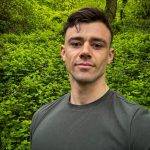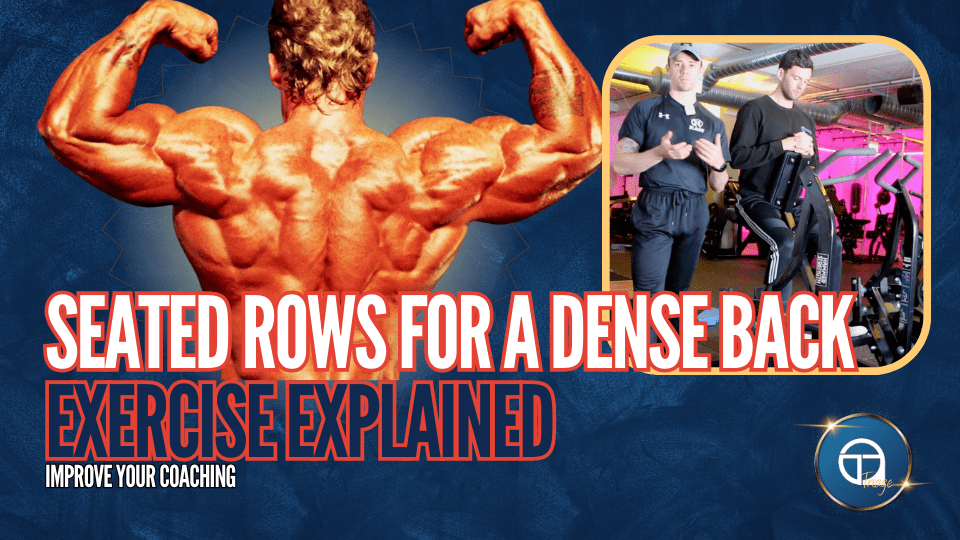How To Use The Plate Loaded Seated Row
Exercise Features
Muscles Worked: Latissimus dorsi (lats), trapezius (traps), rhomboids, rear deltoids, and biceps. If you take a “neutral” (narrower, with palms facing each other) grip, you will generally work the lats more, whereas a wider grip will place greater emphasis on the upper back muscles (traps, rhomboids, rear delts).
Resistance: Most difficult at the top of the rep in most cases, but some plate-loaded rows will be more difficult at the bottom. This depends on the design of the machine, and you can get a feel for this by performing a slow, controlled rep and finding where the rep is most challenging. The point at which you feel most resistance is also generally the point where people will tend to “cheat”, so pay attention to how your body tries to find ways to make the exercise easier.
Tips for Maximal Gains: When setting up, aim to have the top of the pad just below your nipple line. Keep your abdomen and chest tight to the pad, although some backward lean at the top is okay once you are staying in control. Allow your shoulders to round forward at the bottom of the rep, increasing the stretch and stimulus on the traps and rhomboids. Initiate the pull with control, and pause at the top of the rep for a strong contraction of all of the back muscles. When lowering the weight, do so for 2-3 seconds at least, allowing you to squeeze more gains out of the eccentric contraction.
Further Discussion
If you’re using the plate loaded seated row and this type of equipment in particular, or you’re doing any other type of rowing variation, the thing you’re going to be thinking as a trainer is, how can I start to modify the resistance to better match the client’s capabilities? The reasons you might want to do that would be, one, they might find that they have a tendency to fail really early. So, if you’re using a machine that gets really heavy at the top and that’s the position where you have less capacity to produce force, then when you get to that top position, that’s more likely to be your limiting factor. You could feel like you have 15 reps in you, if you aren’t going as far back with the reps, but going all the way back, you can only get six to eight reps. If we use that point of concentric failure as the end point of the set, then we mightn’t necessarily be getting the same stimulus as someone who’s using a better-designed machine. These are some of the reasons that thinking about the exercises you’re using might be important for you or your clients.
If I’m using a plate loaded seated row machine that’s less well designed, and I see my clients are kind of having to cheat a lot as they get into the shortened range, that might be fine in some cases. There’s not necessarily anything wrong with that. But if we’re trying to be strict and keep things constant, then what I can so is actively spot the reps, and as my client starts to get a little bit fatigued, I might start to help him into that shortened position.
If you’re using one of the plate loaded seated row machines that is really easy out further as your client gets to the lengthened range, then what I might do is the opposite thing. I might help him into the shortened range where it’s harder, and then actually apply more resistance as he gets into that lengthened position by pulling against the handle. So, I’m actually increasing the challenge there. So I can be helping him complete the rep as he gets to the shortened range and then actively going against him as he gets into the lengthened range.
What we’re doing there is modifying the resistance characteristics of the exercise through active spotting or the act of applying manual resistance. You might want to think about how that might apply to different goals. If your client is trying to get more training of the muscles around the scapula, the scapular retractors, and the upper back muscles, then when you’re out in the lengthened position, where those muscles are handling most of the load, if I can apply that resistance, pulling the weight back away from him, then I’m applying more resistance to the movement of protraction and retraction. That’s a novel way of starting to change the exercise you’re working with.
This isn’t necessarily about better or worse. It’s about knowing the tools that are at your disposal so that you can create a better experience for your client. If your client reports that when they get into the shortened position, it’s fine when the weights are lighter, but as they increase weights, they start to get a little bit of pain in and around the shoulder, then you’re using your skills as a coach to modify that resistance for them.
So there are some ideas to help you better utilise the plate loaded seated row in your own programming or the programming of your clients. We also have another article on modifying the plate loaded seated row, if you want further ideas about how you can modify the exercise to be more specific with your loading. If you need help with designing your own training, we do offer comprehensive online coaching. If you are a coach, this may be of interest to you, as you can use it as an opportunity to learn more about exercise mechanics and how to modify the training stimulus, to better target the adaptations desired. If you are a coach and you want to upskill your nutrition coaching, we do also have a nutrition coaching certification program that actually teaches you the art of coaching, rather than just more nutrition knowledge. If you want to keep up with our video content, then we would recommend subscribing to our YouTube channel.

Gary McGowan
Hey, I am Dr Gary McGowan, co-founder of Triage, qualified Doctor, Physiotherapist, and Coach.
Having graduated with first class honours in Physiotherapy (BSc) and Medicine (MB BCh BAO), I aim to blend medical science with a decade of coaching experience to help you maximise your performance, transform your body, and optimise your health.
I enjoy grappling, hiking, lifting, and other modes of physical training. When I’m not training, I like to read broadly, particularly philosophy, religion, and history. I love the natural world, particularly the mountains & lakes of my hometown Killarney, County Kerry.


